August's Monthly Newsletter
Two weeks ago it was Ferragosto, the most holiday-ish of all Italian public holidays. Traditionally said to have been established by Rome’s first emperor in 18 BCE as a break following the harvest, the Feriae Augusti (holidays of Augustus) is often considered the world’s oldest observed public holiday. Despite its Christianisation as the Feast of the Assumption of the Virgin (and a shift from the beginning to the middle of the month) it maintains the ancient name. Before COVID made deserted cities a thing, empty Italian city streets were synonymous only with Ferragosto. It’s a feature of a number of films: Il Sorpasso, Caro Diario, and Il Pranzo di Ferragosto are my favourites. The title of the last of these is translated into English as “Mid-August Lunch” which I’ve always thought is rather like translating “A Christmas Carol” as “A Song of Midwinter”. Ferragosto is, I think, untranslatable.
As tradition dictates, Ferragosto found me on a beach on the Ionian coast of Basilicata for perhaps the nineteenth year in a row. Our pals had brought a glorious frittata di maccheroni – the classic beach picnic of the Mezzogiorno – and we planned as usual to pass on the traditional massive lunch instead having our fishy feast in the relative cool of the evening. And so it was, that we were the only people on an entire (but fully-booked) beach of umbrellas as everyone else on the entire Ionian coast was clearly embarking on a long lunch followed by a very long nap. A deserted beach at Ferragosto is a particularly (Southern?) Italian phenomenon.
Ours was the last umbrella at the last lido in Basilicata, and in the peaceful post-frittata somnolence I idly contemplated the coast of neighbouring Calabria stretching off in the distance. And so it was that a couple of days later, when the somnolence had diminished, I hopped in the car and drove along the SS 106 Jonico to the site of ancient Sibari. Ancient Sybaris was founded as a Greek colony in the eighth century BCE occupying a fertile plain between the Crathis and Sybaris rivers on the Gulf of Taranto. The city’s wealth came from the cultivation of fruit and grain, the production of olive oil, and its busy port. It was one of the most important trading posts of the Magna Grecia and, though he is writing long after the event and probably over-gilding the lily, is described by Diodorus Siculus as having a population of 300,000. Tales of the untrammeled luxury of the Sybarites from Herodotus in the 5th century BCE onwards are legendary, such that “sybaritic” has come into common usage.
A notable Sybarite was Smindyrides. He is mentioned by Herodotus who wrote in Book 6 of his Histories that “of all men on earth [he] reached the highest point of luxury”. In a princess and the pea elaboration, Claudius Aelianus, a Roman hellenophile from Praeneste writing even as the Roman Empire was over the hill, long after the heyday of Sybaris which by then was simply the stuff of legend, says Smindyrides could not sleep on a bed of rose petals because they gave him blisters.
Like so many local Italian museums the Archeological Museum of Sybaris and environs is under-visited and has several pieces that any museum in the world would snap up in a jiffy.
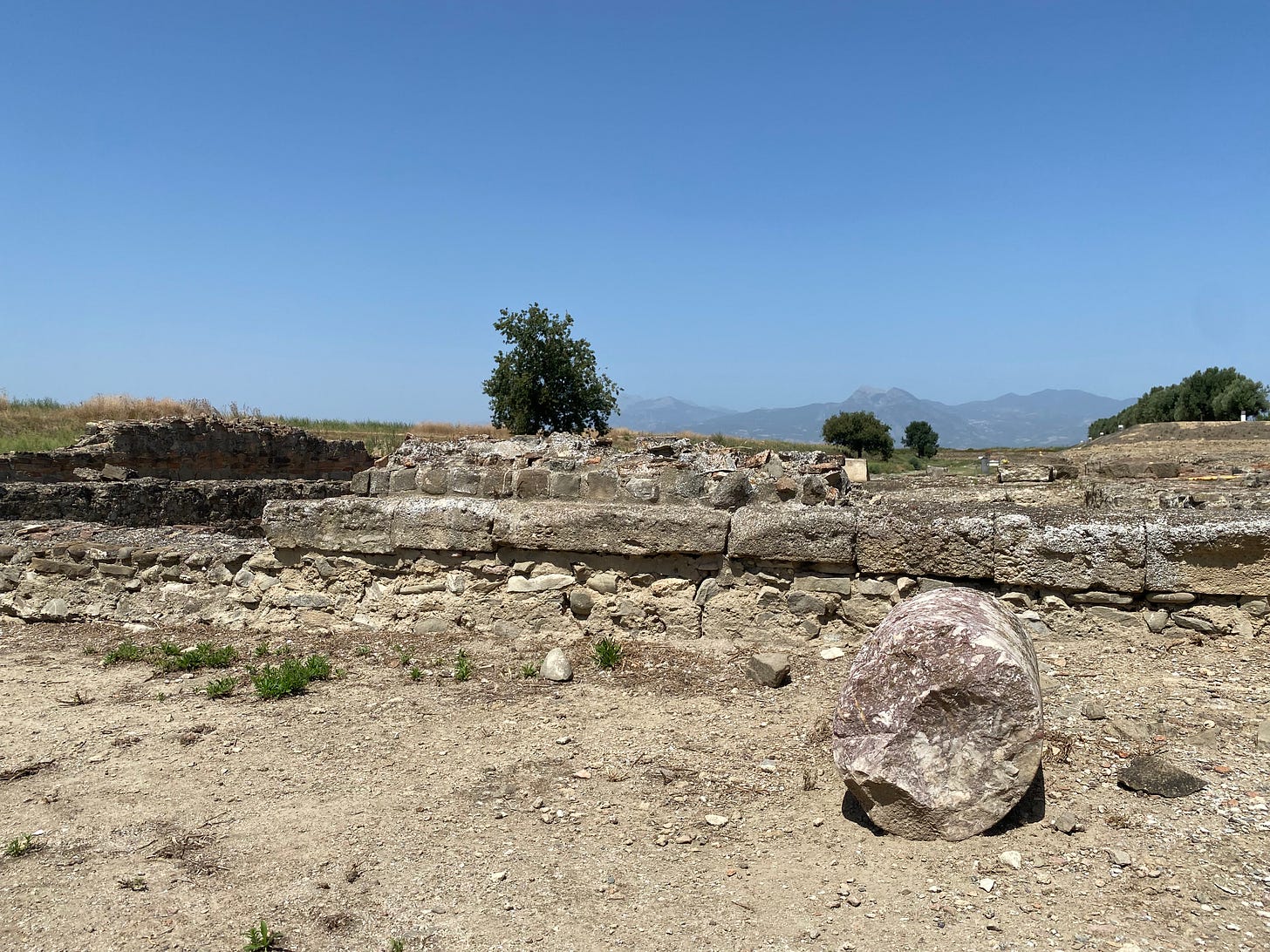
The most celebrated of which, and my favourite, is the “Toro Cozzante”, a bronze statuette of a bull ready to clash horns. It is of Greek manufacture and was made in the late fifth or early fourth century BCE (a couple of centuries after Smindyrides was apocryphally complaining about his mattress of rose petals).
The bull is cast in the lost wax method and is small; its head no larger than my fist. This scale renders the detail somehow more exquisite. The curls of hair; the curve of horns; the folds of the skin: all moulded with precision by hands dead for two and a half millennia.
The bull was only discovered in 2004 in a first century BCE public building at the Roman site of Copiae, formerly the fifth century BCE Greek resettlement of Thurii, itself a re-foundation of ancient Sybaris. The bull had long been a symbol beloved of the Sybarites, perhaps a symbol of strength and fertility alluding to the fecund soil of the plain of the river Sybaris which had borne such ancient wealth.
During its second Greek incarnation as Thurii, coinage often features the bull (and it is to this period that the statuette dates), and evidence of a Roman patch-up and its find site in a Roman building is proof that the atavistic pull of the imagery of a charging bull remained strong in this part of the Gulf of Taranto even as the echoes of the tales of ancient Sybaris grew ever more faint.
From the instep of Italy our August travels continued northwards, covering almost the length of the country and I’m now heading back towards Rome bursting with photos and ideas for future posts. After all, one is never far from Rome!
All best, Agnes


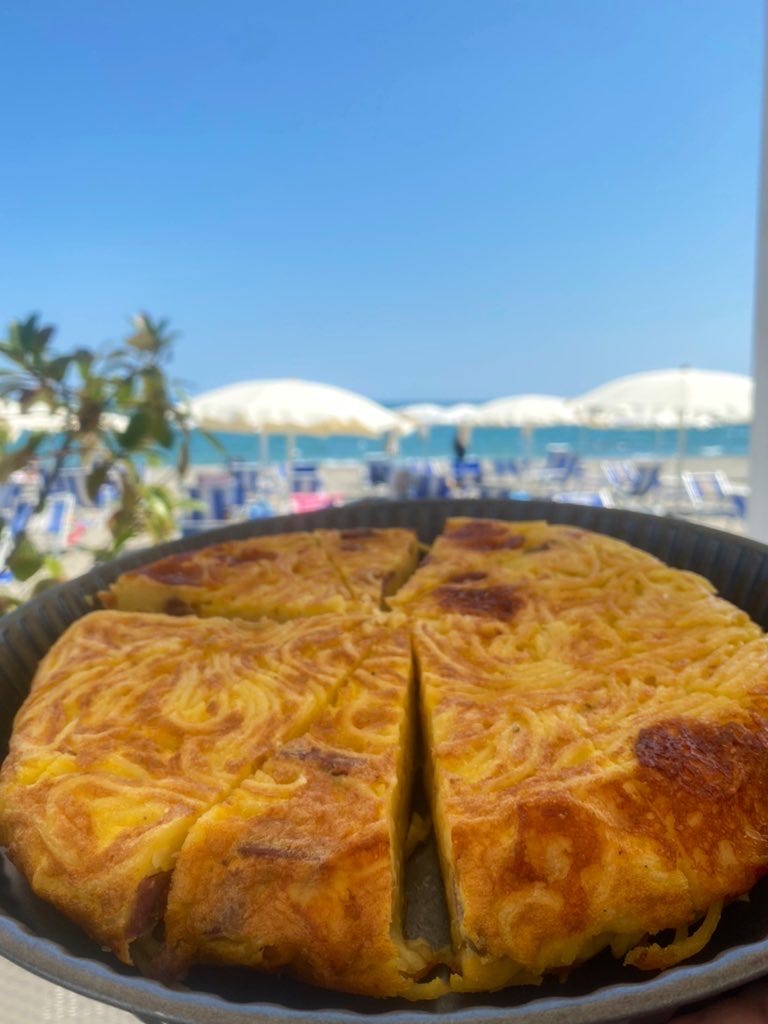


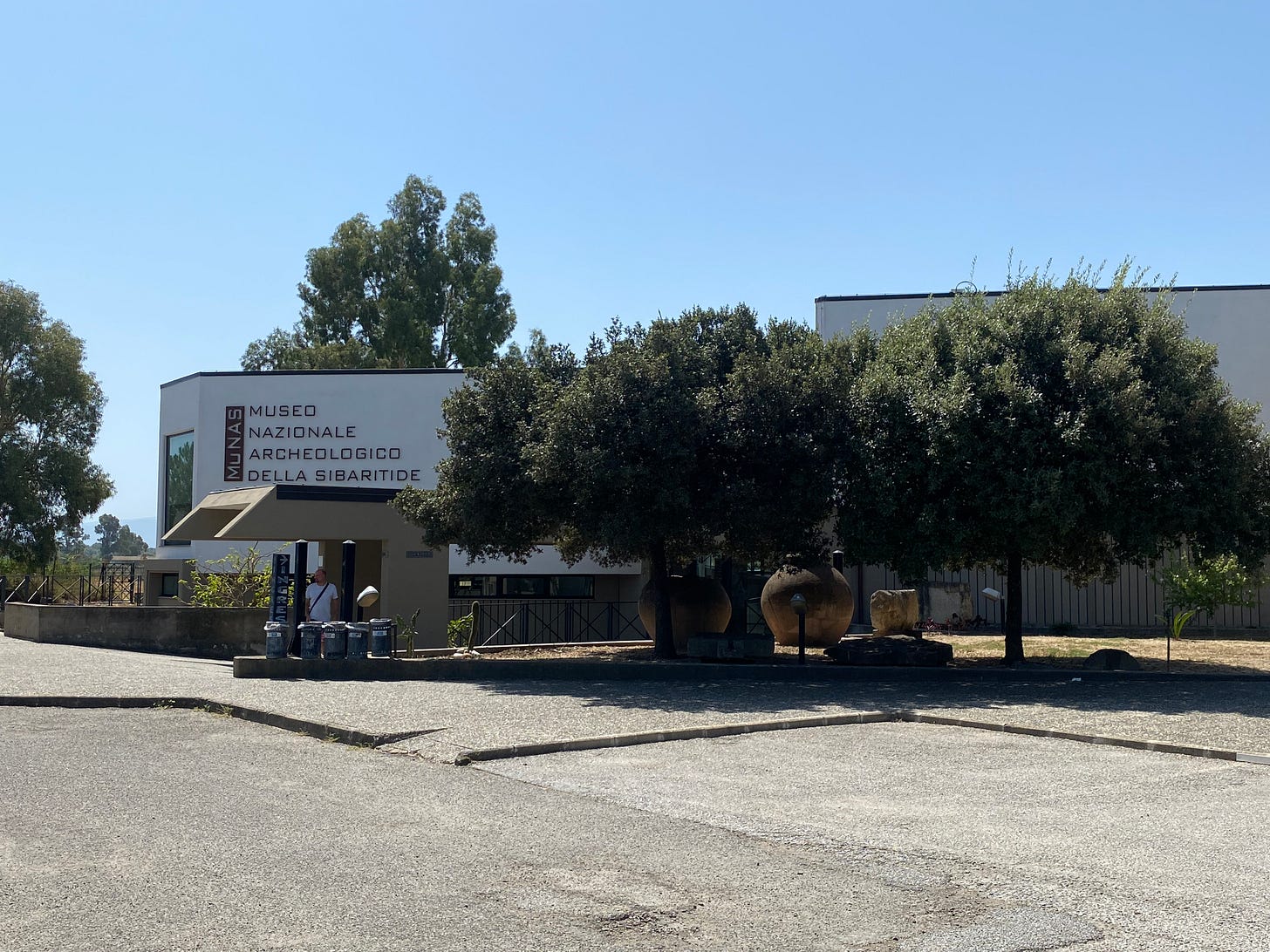

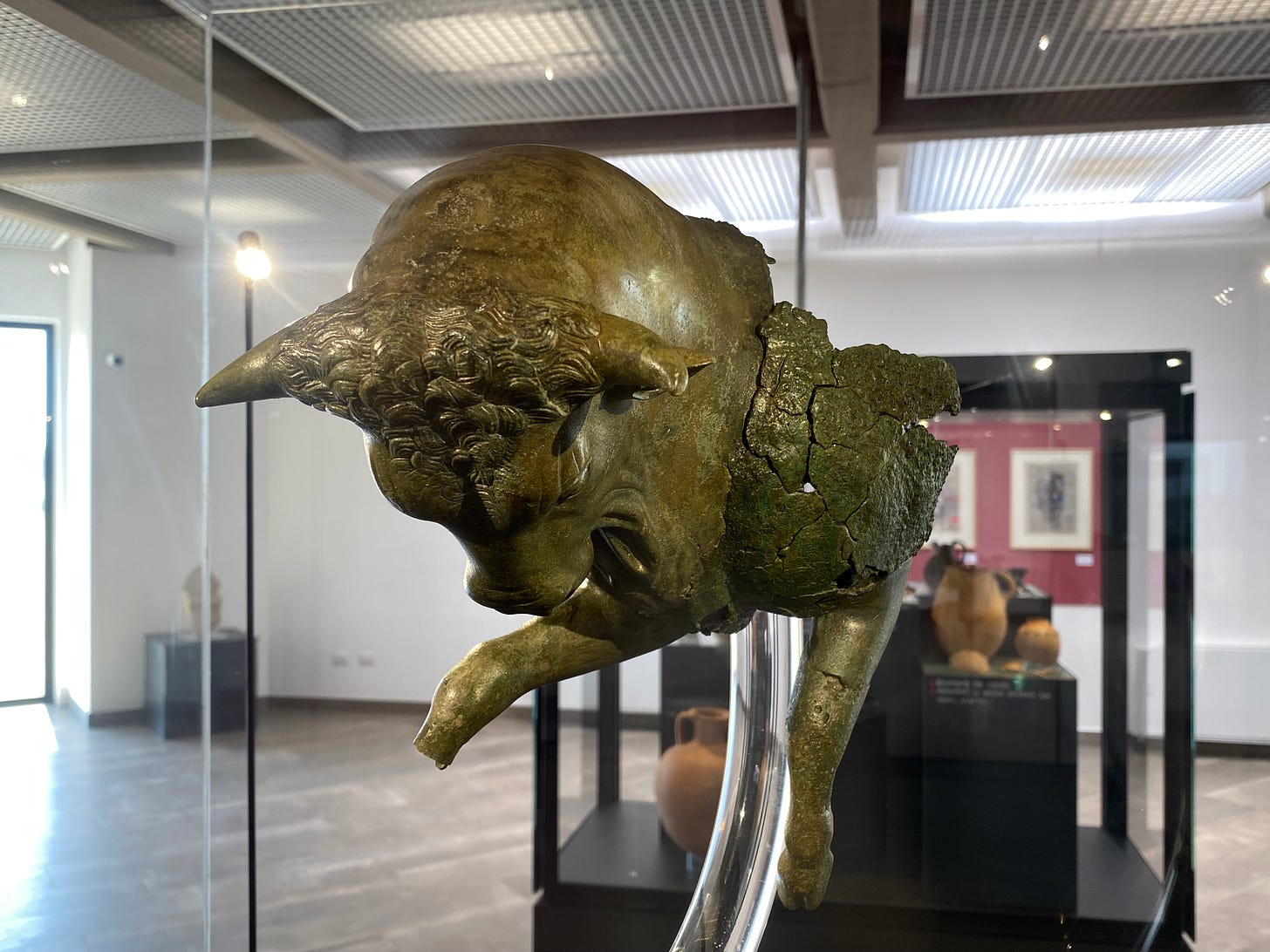
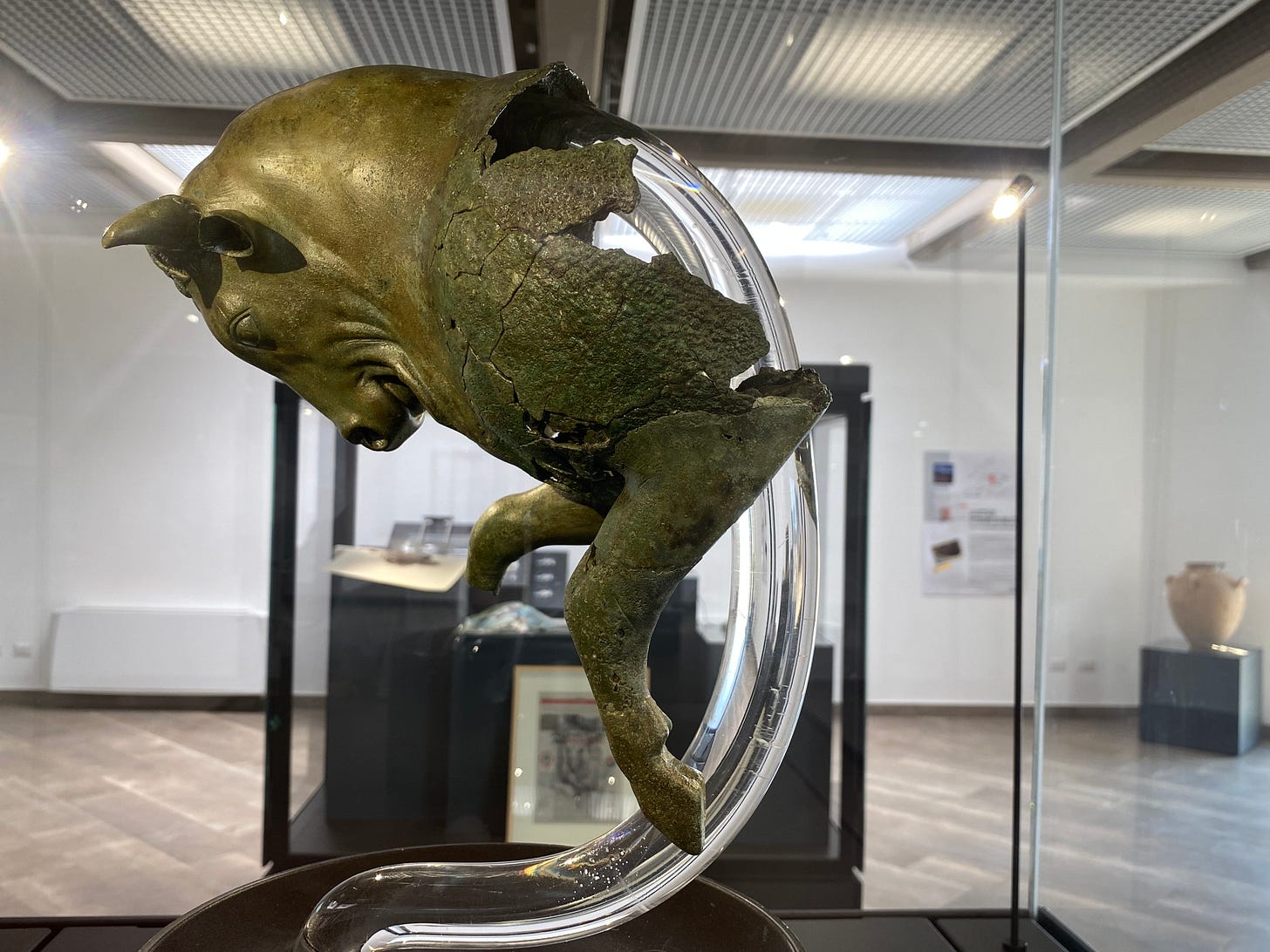
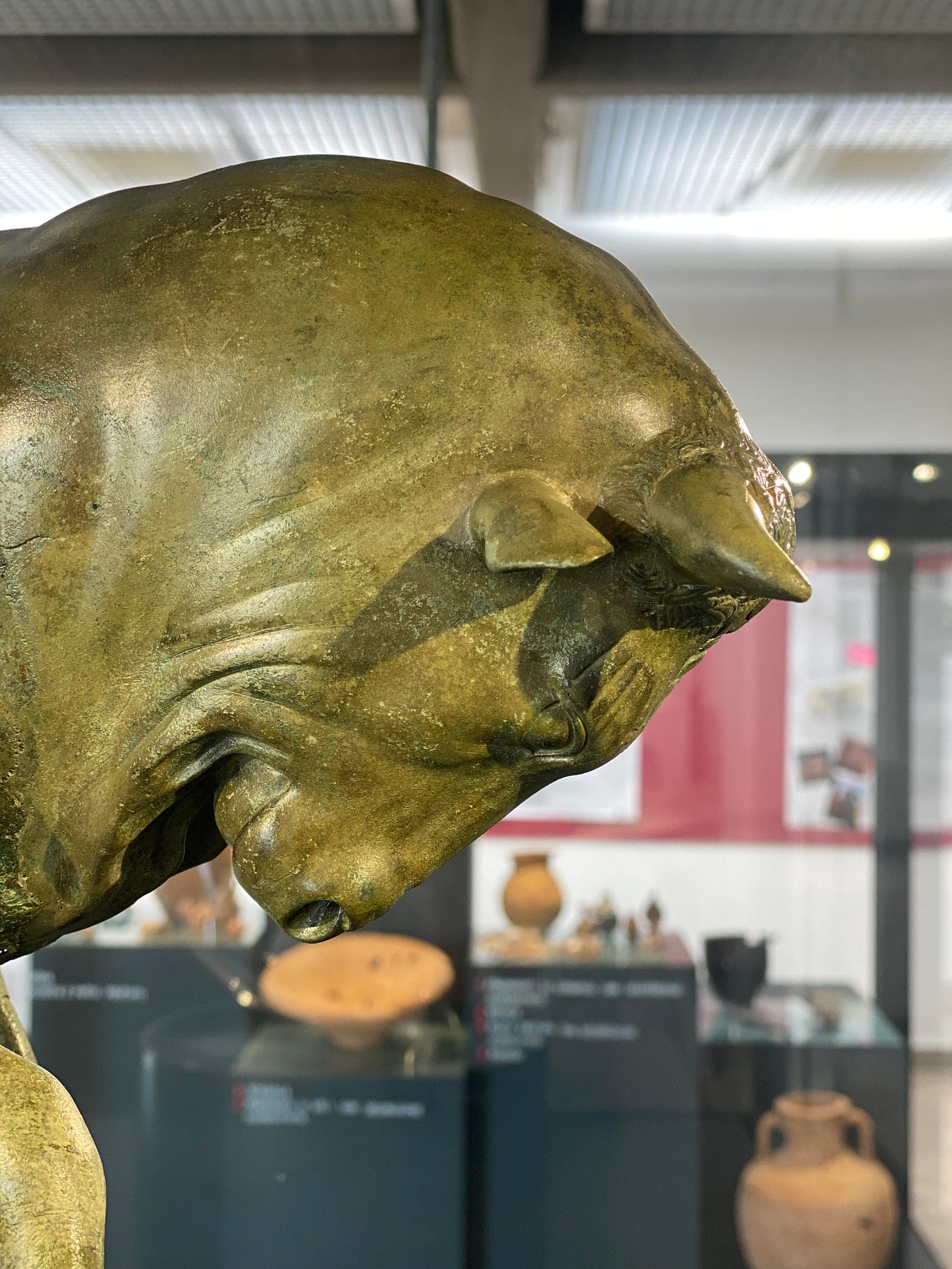
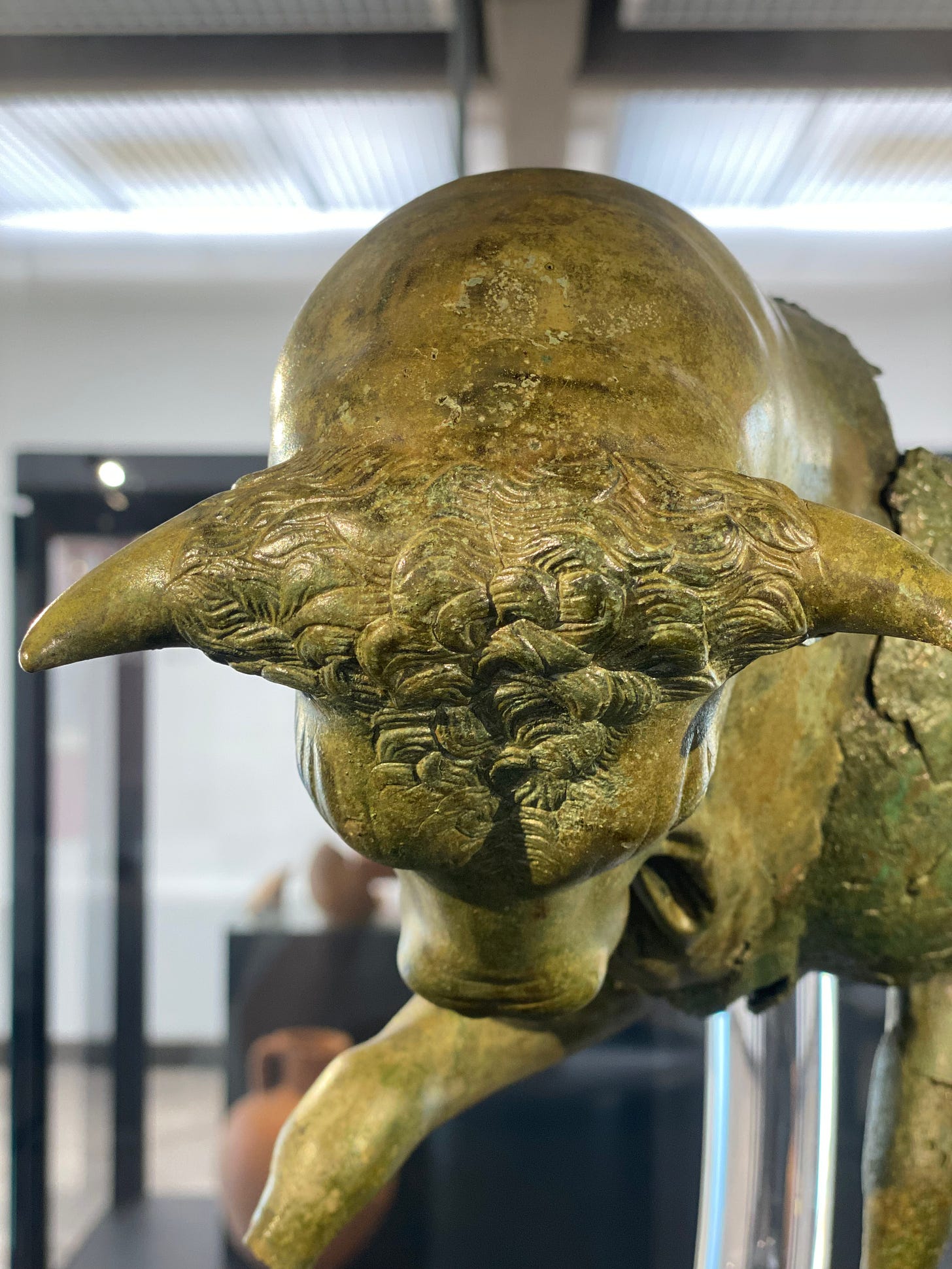
Looking forward to some fascinating stories from Puglia Agnes. We plan to spend 2 and 1/2 weeks there next April. You always add new layers of meaning to everything.
He is indeed exquisite.